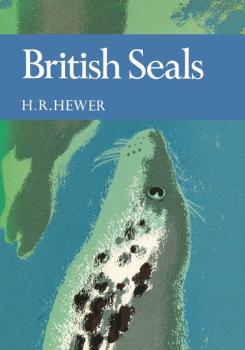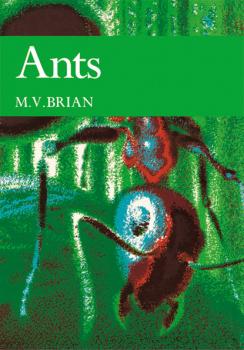ТОП просматриваемых книг сайта:
Collins New Naturalist Library
Скачать книги из серии Collins New Naturalist LibraryАннотация
A complete natural history of the Hebrides – an area of great natural beauty, which draws back thousands of visitors year after year to its wonderful scenery and abundant wildlife.The Hebrides is an area of great natural beauty, which draws back thousands of visitors year after year to its wonderful scenery and abundant wildlife. Yet, until now, there has been no up-to-date, complete natural history for its many followers to refer to. This title fills the gap.In a style at once both readable and informative the Drs. J. M. and I. L. Boyd cover every aspect of the islands. Starting with a clear explanation of the geology, climate and hydrography, they move on to a fascinating description of the many varies habitats, from the sea and inland waters through to woodlands and moor and hill. Part II deals with the characteristics of individual islands and their species, while in part III the islands are discussed in the context of their relation to people – starting with the old naturalists, and ending on a topical note with the current interest in conservation.
Аннотация
Gardens make a significant contribution to the amount of urban green space and are the main contributors to urban biodiversity. Birds are one of the most visible components of this urban biodiversity, and many of us enjoy attracting wild birds into our gardens.This timely addition to the New Naturalist Library examines the ways in which birds use gardens, revealing the many new discoveries that are being made and explaining why individual species of bird use gardens in the ways that they do. Why, for example, do Blackcaps now winter in UK gardens – favouring those in the southwest and those that are urban in nature – and why do Siskins increase their use of garden feeders on damp winter days? With a growing human population, the process of urbanisation is set to continue and it is important to recognise the impacts that urbanisation will have on bird populations and the community of species making a living within the built environment.Although many people do not regard themselves as birdwatchers, most of those who seek to attract wild birds into their gardens do so because they enjoy watching them. Some have taken their interest further by becoming involved in citizen science projects that have helped to develop our understanding of how and why birds use our gardens and the resources that they provide. This research demonstrates the role that gardens play in the ecology of many wild bird populations and reveals insights that continue to fascinate a growing audience, increasingly interested in the wildlife that lives alongside them.
Аннотация
The gull is a familiar sight by the seaside, and one of the most recognisable bird species, but most people know surprisingly little about the lives and habits of these seafaring birds. John C. Coulson remedies this with a comprehensive overview of the gull.There are more than 50 known species of gulls, and many of these are well-adapted to living in urban areas and in close proximity to humans. But there are also less familiar species to discover, which keep their distance from beachgoers. This long-overdue addition to the New Naturalist library explains the thorny issues of gull taxonomy and classification, then introduces readers to what it means to be a gull, physically and genetically. Chapters are divided by larger gull groups, and within these, distribution, lifecyles and behaviours are examined, as well as acclimation to the human world. Colour photography throughout offers ample opportunity to get a sense of the variation within the gull group, and makes this book a pleasure to look through.
Аннотация
A comprehensive account of the seal’s migratory patterns, methods of hunting and patterns of reproduction.While seals are a perennial favourite among visitors to zoos for their playful and engaging behaviour, less is known about their actions in natural habitats. Based on extensive field observations, this thoroughly illustrated volume in The New Naturalist Series is one of the most authoritative studies of its kind. The late Professor Hewer shows how recent discoveries for determining the age of seals have greatly contributed to research in the subject and he presents a comprehensive account of the seal’s migratory patterns, methods of hunting for food, movements and patterns of reproduction. As the large colonies of seals indigenous to British waters constitute and important segment of the world’s seal population, Professor Hewer’s findings will be helpful to all interested in seal behaviour, and conservation.Professor Hewer researched seal behaviour for over twenty years, did extensive field work in seals and published several articles on his findings. He was Emeritus Professor at the University of London and served with the British government’s Ministry of Agriculture and Ministry of Food.
Аннотация
Mammals in the British Isles looks at the influences on their numbers and distribution, both now and in the past, examines aspects of their biology with emphasis on function and physiology, and concludes with an account of relationships with man.This book by Dr Harrison Matthews will be warmly welcomed by all those for whom his British Mammals, in this series, was a standard work for nearly 30 years. In recent years our understanding of the British species has expanded greatly. This volume offers a synthesis of modern knowledge derived from living animals studied in the field and covering all facets of mammalian life in the British Isles. It will be as important to a new generation of naturalists as the previous book was to an older one.The book is full of fascinating detail – of the shrews which scream in defence of territory to avoid fighting; of young rats that play to learn while adult otters play for fun; of vole 'plague' populations which crash as a result of stress; of monogamy and parental care of the dog fox – but it also paints a broader picture of interdependence, conservation and the part played by man.As much a part of nature as any other member of the fauna, it is man who has created the character of the environment – by clearing, draining, building and developing agriculture – and made available the wide variety of habitats occupied by indigenous, introduced and feral populations.Dr Harrison Matthews gives a general account of British mammals and the things influencing their numbers and distribution both now and in the past, examines aspects of their biology with emphasis on function and physiology, and concludes with an account of relationships with man and the measures he has taken for their control and conservation.
Аннотация
Ants should provide both the amateur naturalist and the professional zoologist with a valuable source of reference, and a fascinating account of the lives of an intriguing group of insects.Ants have always exercised a fascination that extends beyond the world of biology. They have attracted the attention of poets and dramatists, and also of those philosophers and political theorists who have envied their apparent industry and rigid and complex communal organisation. The social life of ants is indeed extraordinary. It forms the basis of their entire lives; an ant on its own has no chance of survival. Ants are the only group of insects in which there are no solitary species at all.In this book Dr Brian, the country's leading authority on ants, brings together the results of recent research (much of it his own) into the zoology, ecology and social life of the group. Dr Brian begins by discussing the relationship of ants to other insects, their anatomy and physiology, and then turns to the different species of British ant (with an identification key), feeding, including aphid 'farming' and the specialised role of the workers in acting as travelling food containers for the nest itself, the rearing of the young and the different caste systems (including the life history of the queen), the ecological significance of ants, and the role they play in the lives of other animals. Particular attention is paid to the importance of communication in the ant society, and there is a complete section of distribution maps – one for each of the 47 British Species – compiled according to the latest available data. There are 16 plates of black and white photographs and two colour plates of ant species specially painted for this volume by Gordon Riley.This book should provide both the amateur naturalist and the professional zoologist with a valuable source of reference, and a fascinating account of the lives of an intriguing group of insects.
Аннотация
Cave exploration has uncovered archaeological finds which have enhanced our understanding of human evolution, and fossil remains, such as woolly mammoths, which reveal something of the Pleistocene animal world. But perhaps most fascinating of all is the living natural history of caves.There are few unexplored places on earth, but caves still offer countless opportunities for discovery. From new passages to whole new cave systems, significant finds are still being made – recent exploration in South Wales revealed Britain's largest passageways.Caves are formed over many thousands of years, as subterranean waters seep slowly through the crevices of the buckled and twisted laters of limestone rocks. These cracks develop into fantastically shaped passages which stretch for miles, huge caverns housing vast, still lakes and deep potholes through which icy waterfalls tumble. Within them form arrays of stalactites and stalagmites, delicately twirling helictites, slender pillars of calcite and crystal pools. And it is these wonders that have encourages the adventurers who have explored and charted this underground world – descending on ropes into gaping pits, crawling and digging their way along tunnels and diving through freezing torrents to do so.Cave exploration has uncovered archaeological finds which have enhanced our understanding of human evolution, and fossil remains, such as woolly mammoths, which reveal something of the Pleistocene animal world. But perhaps most fascinating of all is the living natural history of caves.The study of cave biology is still in its infancy. Speculation and controversy abound, cavernicolous communities remain under-recorded and new species await discovery in most subterranean habitats. But in this book, Philip Chapman has drawn together his expert knowledge of caves and cave life to present an outstanding and cohesive account of what is now known in this extraordinary world, which for so many has remained unknown for so long.
Аннотация
Here is a fascinating and authoritative survey of the complex inter-relationships of bird and human life in this country.Here is a fascinating and authoritative survey of the complex interrelationships of bird and human life in this country.Dr. Murton begins with an entire outline of the earliest evidence of the impact of birds on man, and vice versa and of the ecological considerations involved. He then proceeds to describe in detail how men and birds affect each other in these islands – in food production, farming, forestry, horticulture, fishery, urban conditions and hygiene, sport and industry. He concludes with an account of the conservation issues involved – the need to preserve unique habitats and to protect bird life, beside the demands of crop protection and control of 'problem birds'.It is a book which anyone interest in either our birds or our environment will find of absorbing interest.








